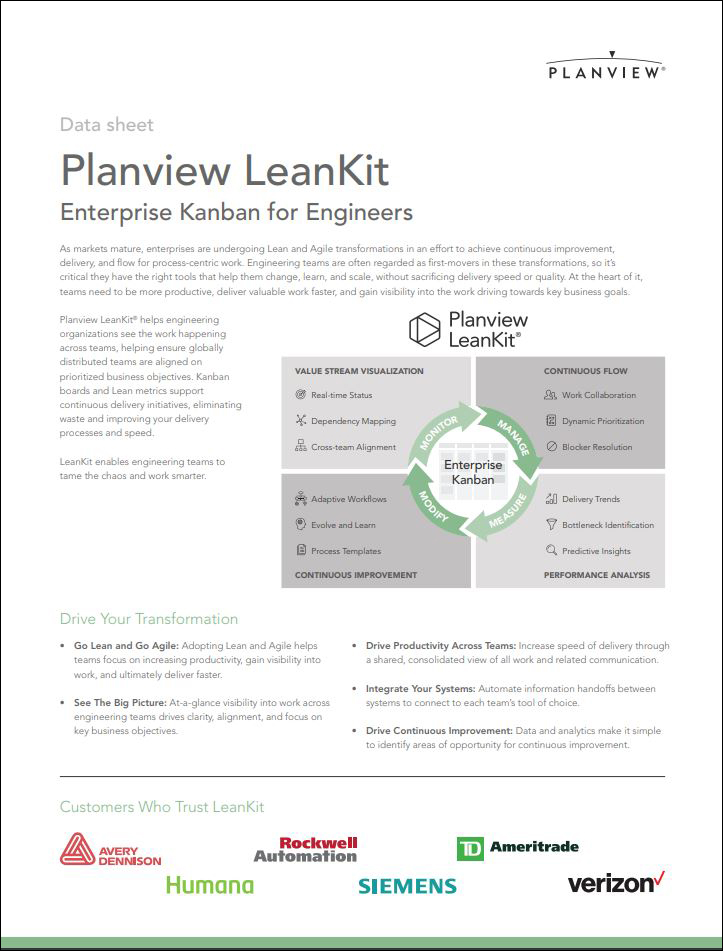
Congratulations on making the choice of a Lean work style. It’s not easy to change (and stick to) this type of methodology, but it truly does pay off in the long-term. It also shows a progressive attitude within your organization and a dedication toward its success as a whole. Many trending project management methodologies in keeping with the Agile philosophy can go hand in hand with Lean methodologies and even augment your Lean team in a multitude of ways.
As a refresher, here’s a list of the seven principles of the Lean methodology:
- Eliminate Waste
- Build Quality In
- Create Knowledge
- Defer Commitment
- Deliver Fast
- Respect People
- Optimize the Whole
Let’s drill down the ways that four trending project management methodologies can work in tandem with the principles of the Lean methodology:
Agile
Agile seems to be a favorite buzzword that CEOs, CTOs and the like throw around, sometimes without knowing the real meaning. There’s even an internet meme asking the question (tongue-in-cheek), “Are we Agile yet?”
To be accurate, the term Agile does not refer to a methodology as much as it applies to a way of developing software, based on four key values:
- Individuals and interactions over processes and tools
- Working software over comprehensive documentation
- Customer collaboration over contract negotiation
- Responding to change over following a plan
Given the way that Agile compliments the Lean style, Agile seems to be morphing into a methodology that goes hand-in-hand with Lean thinking and can increase go-to-market strategies while at the same time increasing productivity.
Agile can easily fit into the Lean organization’s environment, especially as it applies to eliminating waste, respecting people, and delivering fast. An Agile theory of work can extend from the development team to all other parts of the company that produce product-based work, including marketing and sales. Marketing automation and customer relationship management (CRM) software also now include features that make Agile marketing and sales projects possible (learn more at TechnologyAdvice.com/crm/). Agile methods are particularly effective in environments where the pivot is routinely required and where plans change frequently.
Scrum
Scrum is a term stolen from the game of rugby where a portion of the team huddle closely together with their heads down focused on the goal of gaining possession of the ball. In a similar fashion, this methodology is about creating a self-managed, empowered team that defines deliverables and roles and works on tight target goals as quickly as possible without sacrificing quality. Scrum is an Agile style of work that also compliments Lean in that it is focused on delivering fast simultaneously with doing things correctly. Scrum “Masters” typically work in “sprints” that will run around two to four weeks in length and end when a gatekeeper assesses the work to meet the DoD (Definition of Done).
Kanban
Kanban might be described as Agile-light, as it is not as structured and focused on process. It is more flexible and tries to improve output by assessing core work practices every step of the way including workflow efficiencies, lead time optimization, clear communication, and continued evaluation. Two key motivators come into play in the Kanban methodology – lead time and quality. Upping quality while reducing lead time is the sweet spot Kanban companies continuously strive toward.
Waterfall
Waterfall also known as Software Development Life Cycle (SDLC) is yet another style of Agile work that can go hand in hand with your Lean organization. In the waterfall style of work, planning takes the front seat and may go against the “deliver fast” principle of Lean. Expect a slow upstart due to extensive planning for a theoretically flawless and structured execution plan that eliminates waste and produces quality output. Waterfall comes with one caveat: it does not leave much room to pivot and, if change happens, the methodology can be broken.
Other popular methodologies that could augment your lean management style include XP (Extreme Programming), PRINCE2, and PMBOK. Whether you institute one of these methodologies for a specific project or plan to fold another layer into your work processes across your entire organization, you may find that you can drill even deeper into productivity, quality and efficiency with their help.
Planview AgilePlace® helps engineering organizations see the work happening across teams, helping ensure globally distributed teams are aligned on prioritized business objectives. Kanban boards and Lean metrics support continuous delivery initiatives, eliminating waste and improving your delivery processes and speed. Learn more at at https://www.planview.com/products/leankit/.





